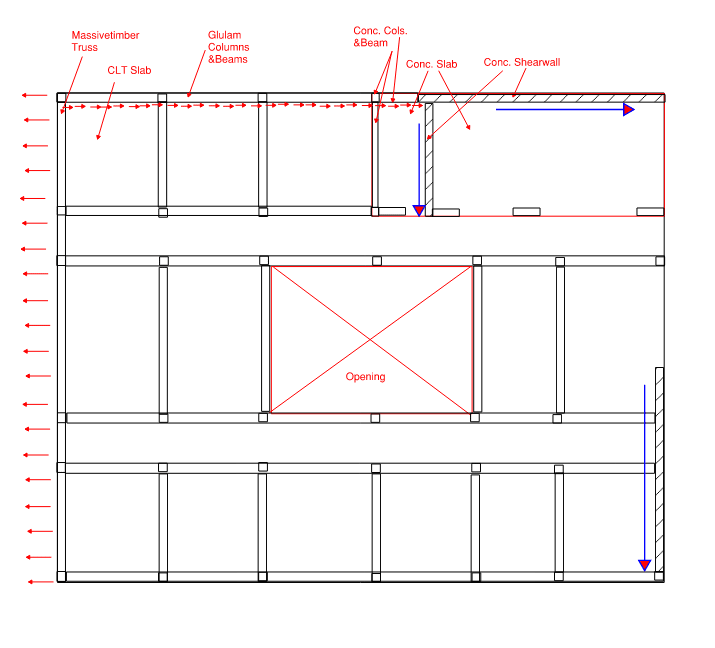otto_eng
Civil/Environmental
- Jun 27, 2017
- 88

I recently had a discussion about the shear load transfer in a massive timber diaphragm. Based on my understanding from the first principles, the lateral load, wind load in this case, should be transferred to the lateral resisting elements -> conc. shear walls in this case through the collector. So here is the argument of my colleague, he is saying that the shear does not need to be transferred through a collector but it can be introduced to the shear wall from the conc slab which is positioned right below the conc. shear wall.
My plan was to use straps at each clt slab to clt slab connection and bring it back to the beam which is then bringing the force to the shear wall through some kind of a connector..
Am I being the wrong one here ? Should I throw my engineer career out of the window ?
Thanks all!


